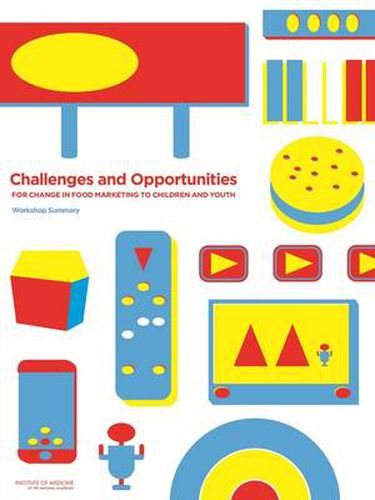Readings Newsletter
Become a Readings Member to make your shopping experience even easier.
Sign in or sign up for free!
You’re not far away from qualifying for FREE standard shipping within Australia
You’ve qualified for FREE standard shipping within Australia
The cart is loading…






The childhood obesity epidemic is an urgent public health problem. The most recent data available show that nearly 19 percent of boys and about 15 percent of girls aged 2-19 are obese, and almost a third of U.S. children and adolescents are overweight or obese (Ogden et al., 2012). The obesity epidemic will continue to take a substantial toll on the health of Americans. In the midst of this epidemic, children are exposed to an enormous amount of commercial advertising and marketing for food. In 2009, children aged 2-11 saw an average of more than 10 television food ads per day (Powell et al., 2011). Children see and hear advertising and marketing messages for food through many other channels as well, including radio, movies, billboards, and print media. Most notably, many new digital media venues and vehicles for food marketing have emerged in recent years, including Internet-based advergames, couponing on cell phones, and marketing on social networks, and much of this advertising is invisible to parents.
The marketing of high-calorie, low-nutrient foods and beverages is linked to overweight and obesity. A major 2006 report from the Institute of Medicine (IOM) documents evidence that television advertising influences the food and beverage preferences, requests, and short-term consumption of children aged 2-11 (IOM, 2006). Challenges and Opportunities for Change in Food Marketing to Children and Youth also documents a body of evidence showing an association of television advertising with the adiposity of children and adolescents aged 2-18. The report notes the prevailing pattern that food and beverage products marketed to children and youth are often high in calories, fat, sugar, and sodium; are of low nutritional value; and tend to be from food groups Americans are already overconsuming. Furthermore, marketing messages that promote nutrition, healthful foods, or physical activity are scarce (IOM, 2006). To review progress and explore opportunities for action on food and beverage marketing that targets children and youth, the IOM’s Standing Committee on Childhood Obesity Prevention held a workshop in Washington, DC, on November 5, 2012, titled New Challenges and Opportunities in Food Marketing to Children and Youth.
$9.00 standard shipping within Australia
FREE standard shipping within Australia for orders over $100.00
Express & International shipping calculated at checkout
The childhood obesity epidemic is an urgent public health problem. The most recent data available show that nearly 19 percent of boys and about 15 percent of girls aged 2-19 are obese, and almost a third of U.S. children and adolescents are overweight or obese (Ogden et al., 2012). The obesity epidemic will continue to take a substantial toll on the health of Americans. In the midst of this epidemic, children are exposed to an enormous amount of commercial advertising and marketing for food. In 2009, children aged 2-11 saw an average of more than 10 television food ads per day (Powell et al., 2011). Children see and hear advertising and marketing messages for food through many other channels as well, including radio, movies, billboards, and print media. Most notably, many new digital media venues and vehicles for food marketing have emerged in recent years, including Internet-based advergames, couponing on cell phones, and marketing on social networks, and much of this advertising is invisible to parents.
The marketing of high-calorie, low-nutrient foods and beverages is linked to overweight and obesity. A major 2006 report from the Institute of Medicine (IOM) documents evidence that television advertising influences the food and beverage preferences, requests, and short-term consumption of children aged 2-11 (IOM, 2006). Challenges and Opportunities for Change in Food Marketing to Children and Youth also documents a body of evidence showing an association of television advertising with the adiposity of children and adolescents aged 2-18. The report notes the prevailing pattern that food and beverage products marketed to children and youth are often high in calories, fat, sugar, and sodium; are of low nutritional value; and tend to be from food groups Americans are already overconsuming. Furthermore, marketing messages that promote nutrition, healthful foods, or physical activity are scarce (IOM, 2006). To review progress and explore opportunities for action on food and beverage marketing that targets children and youth, the IOM’s Standing Committee on Childhood Obesity Prevention held a workshop in Washington, DC, on November 5, 2012, titled New Challenges and Opportunities in Food Marketing to Children and Youth.